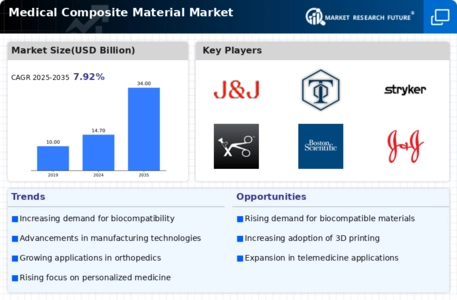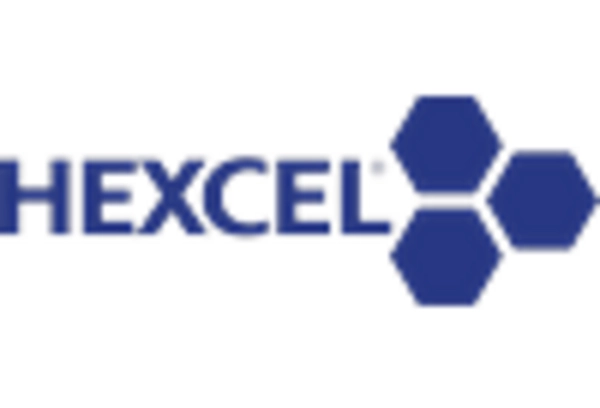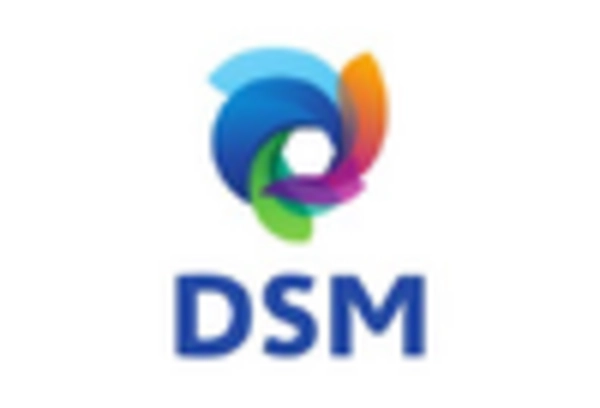Aging Population and Chronic Diseases
The Medical Composite Material Market is significantly influenced by the aging population and the rising prevalence of chronic diseases. As the global population ages, there is an increasing need for medical devices and implants that can enhance the quality of life for elderly patients. The World Health Organization indicates that by 2030, the number of people aged 60 years and older will reach 1.4 billion. This demographic shift is likely to drive the demand for durable and biocompatible composite materials used in orthopedic implants, dental applications, and cardiovascular devices. Consequently, the Medical Composite Material Market is expected to expand as manufacturers focus on developing materials that cater to the specific needs of this growing population.
Focus on Cost-Effectiveness and Efficiency
The Medical Composite Material Market is increasingly focused on cost-effectiveness and efficiency in the production of medical devices. Manufacturers are under pressure to reduce costs while maintaining high-quality standards. This has led to the exploration of new composite materials that can be produced at lower costs without compromising performance. The market for cost-effective medical devices is projected to grow, driven by the need for affordable healthcare solutions. As a result, the Medical Composite Material Market is likely to see a shift towards materials that offer both economic and functional advantages, thereby enhancing the overall value proposition for healthcare providers and patients.
Regulatory Support and Standards Development
The Medical Composite Material Market is benefiting from enhanced regulatory support and the development of standards for composite materials. Regulatory bodies are increasingly recognizing the importance of composite materials in medical applications, leading to the establishment of guidelines that ensure safety and efficacy. This regulatory framework is crucial for manufacturers as it provides a clear pathway for product development and market entry. The establishment of international standards for medical composites is likely to foster innovation and encourage investment in research and development. As a result, the Medical Composite Material Market is poised for growth as companies align their products with these evolving regulations.
Technological Advancements in Material Science
The Medical Composite Material Market is experiencing a surge in innovation due to advancements in material science. New composite materials are being developed that offer enhanced biocompatibility, strength, and durability. For instance, the integration of nanotechnology into composite materials has led to improved mechanical properties and reduced weight, which are crucial for medical applications. The market is projected to grow at a compound annual growth rate (CAGR) of approximately 6.5% over the next five years, driven by these technological innovations. Furthermore, the development of smart materials that can respond to environmental stimuli is likely to open new avenues for applications in the medical field, thereby expanding the Medical Composite Material Market.
Rising Demand for Minimally Invasive Procedures
The Medical Composite Material Market is witnessing an increasing demand for minimally invasive surgical procedures. These procedures are preferred due to their benefits, such as reduced recovery time and lower risk of complications. As a result, there is a growing need for advanced composite materials that can be used in surgical instruments and implants. The market for minimally invasive surgical devices is expected to reach USD 50 billion by 2026, which will likely drive the demand for innovative medical composites. The ability of these materials to provide strength while being lightweight and biocompatible makes them ideal for such applications, thus propelling the Medical Composite Material Market forward.

















Leave a Comment